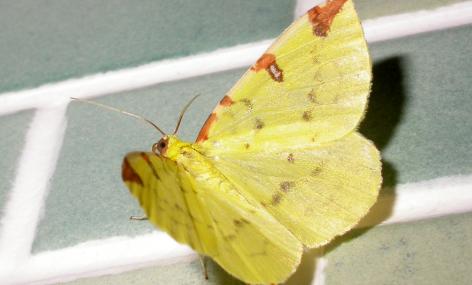The Brimstone Moth is a medium-sized, mainly night-flying moth that is on the wing between April and October when it frequently comes to lights in the garden. It can also be found in woodland, scrub and grassland habitats. The twig-like caterpillars feed on a variety of shrubs in the rose family, including Hawthorn, Blackthorn and Rowan. The Brimstone Moth hibernates as a dense cocoon, usually on the ground.
Moths such as the Brimstone Moth are common in gardens - why not set up a moth trap at night and see who comes to visit? To attract moths and butterflies into your garden, plant nectar-rich borders and shrubs for them to feed on. To find out more about encouraging wildlife into your garden, visit our Wild About Gardens website: a joint initiative with the RHS, there's plenty of facts and tips to get you started.
